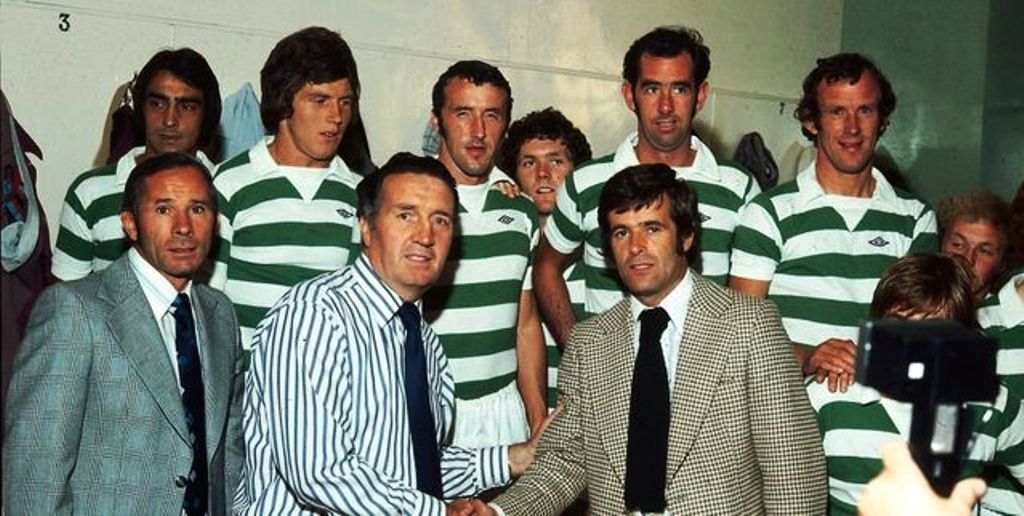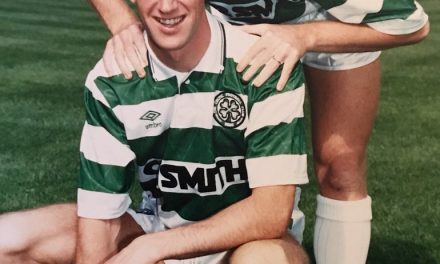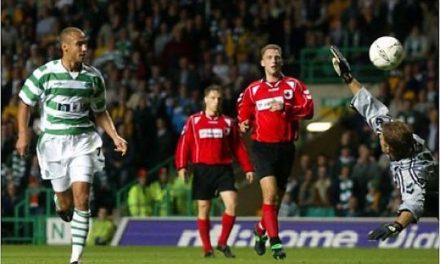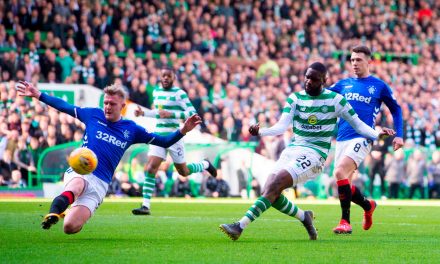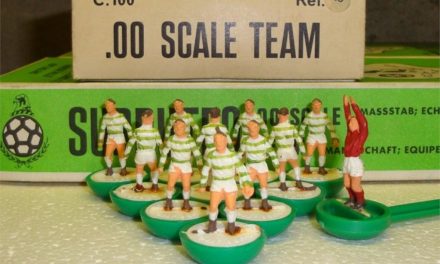It’s hard to convey to a younger generation that, for 13 years, Hibernian retained of the best footballers in the UK. From 1963, Pat Stanton had represented Hibs with distinction and led them to considerable success as captain. There were four legendary captains in Scottish football during that period – Billy McNeill at Parkhead, John Greig at Ibrox, Billy Bremner for Scotland and Pat was right up there with them as captain of Hibs.
Chelsea, Spurs and Man United had all attempted to prise Pat away during his time at Easter Road and had been chased by the Edinburgh club. This was a time before freedom of contract when clubs had total control of their players but, in any case, Pat was a Hibs man to the core and enjoyed his life in the capital.
By the summer of 1976 Pat was in the autumn of his career. He was 32 and had fallen out of favour with Hibs’ manager, Eddie Turnbull, who was well known to be a prickly character at the best of times. Over at Parkhead, Jock Stein had just taken the reigns back as manager after a year’s absence following a serious car crash in which he nearly died and was now rebuilding his team.
The 1976-77 season was just a month old and Celtic’s defence had looked decidedly shaky in the few games they had played. Stein knew he had to take action and had heard that Stanton was unsettled at Hibs. He dangled the young Jackie McNamara as a swap deal and, to his delight, Hibs agreed to allow their captain to depart. Pat Stanton became a Celtic player, much to the surprise of Scottish football.
He was thrown in at the deep end when he made his debut against Rangers at Celtic Park. Although 2-0 down at half time, the Celts had roared back for a 2-2 draw, courtesy of a two fine Paul Wilson goals, and had been unlucky not to win in the end. Pat had been a notable midfielder for Hibs but Stein’s plan was to play him as a sweeper behind the inexperienced centre half, Roddy MacDonald. Big Roddy was terrific in the air but was in need of guidance on the pitch and Pat’s experience was to prove invaluable.
Stein had brought a number of new players to the club and Pat was the final piece in the jigsaw. He produced a remarkably high level of consistency and during that 76-77 it’s no exaggeration to say he did not have a bad game. Had it not been for Danny McGrain’s exceptional talent then he would have been in line for the player of the year award. Stein had always liked to play from the back and Pat read the game superbly and his distribution from the back was excellent. He very often came off muddy pitches with hardly a bit of dirt on his shorts as he could read the game superbly and rarely had to tackle.
On April 16th 1977 fate deemed that Pat travel to Easter Road knowing that Celtic required one point to lift their first SPL title. Sadly, Hibs’ chairman Tom Hart banned the television cameras from the game citing his protest against extensive television coverage. Hart was fooling no one. The old boy probably couldn’t bear the thought of Celtic and Stanton lifting another title on Hibs’ patch. He was so spiteful that he even banned the Celtic film club from filming it for posterity. Celtic won 1-0 and Pat had at last got his hands on a League winners medal.
A month later Pat had the chance to complete a domestic set of medals against Rangers in the Scottish Cup final (he had already won a League Cup medal and two Drybrough Cup medals during his time at Hibs). As the Celtic team sat in the dressing room before kick off with Jock Stein giving them instruction, a ball boy delivered ‘a telegram for Pat Stanton.’ Somewhat confused, he opened it, and it was from his old Hibs team mates O’Rourke, Blackley and Stewart wishing him good luck for the big game. It was a magnificent gesture and Pat was faultless for Celtic and played a big part in the 1-0 victory. The domestic set of medals was now complete. The only disappointment was that Pat had been ‘cup tied’ for the League Cup campaign and the feeling is that Celtic would not have lost to Aberdeen in the League Cup final had he been eligible to play.
That summer Celtic won a prestigious tournament in Australia by beating Arsenal and Red Star Belgrade (Pat was sent off against Red Star for retaliation) and Celtic looked forward to the future with optimism and a decent run in the European Cup. The league flag was raised on August 13th 1977 against Dundee United and in that game Stanton suffered a knee injury and despite his best efforts he could not recover and retired from playing in 1978. It was a huge loss to Celtic and they could never truly replace someone of his character and ability in central defence for a very long period.
Despite only being at Parkhead for a short time Pat made a huge impression on the Celtic fans and is fondly remembered. It was a huge disappointment when he retired as he had years of good football left in him. Pat Stanton was a footballer of the highest pedigree whom the purists amongst the Celtic support admired greatly. Lachie Mor, of this parish, always refers to him as the ‘Great Pat Stanton.’ Anyone who saw Pat play will surely agree.

